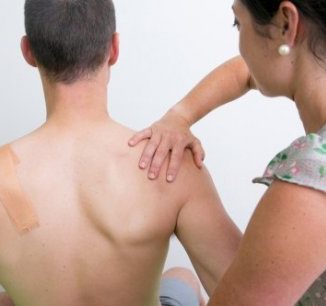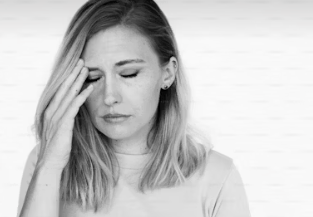The Anatomy of a Torn Rotator Cuff.
Published on
14 Jun 2016


Written by
Kate Senini
Consultant Physiotherapist
Call us on: (03) 9975 4133
What is a torn rotator cuff? How can it affect participation in sport and daily life? What is the healing timeframe? Will I be able to make a full recovery? Kate Senini takes a detailed look into some common questions surrounding torn rotator cuffs.
If you’ve torn your rotator cuff, the chances are that you’ll want a thorough insight into the nature of the injury, with recommendations for treatment and management. Unfortunately, it’s not exactly cut and dry.
Treatment options, rehab times and the importance (or relevance) of surgical correction have all been greatly debated amongst the medical fraternity for many years.
So, will you need surgery? What are the other options? These questions are always on our radar as physiotherapists when we meet and assess a patient presenting with the injury. Let’s take a look into some answers.
The rotator cuff.
The ‘rotator cuff’ is actually a group of four muscles that create stability in the shoulder joint. These muscles attach onto the upper part of the arm, just below the ball of the shoulder joint. They then lay over the top of the shoulder and attach onto the shoulder blade at the other end. The muscles play a vital role in pulling the ball of the shoulder joint securely up and into the socket. Thanks to the rotator cuff, we’re able to use our shoulders and arms for all manner of movements. It’s a key player in strength and basic shoulder functionality.
These muscles are absolutely integral in so many aspects of our everyday life.
One of the main problems with a tear to the rotator cuff is that it occurs in the tendon: the component of the muscle that attaches onto the bone. This part of the muscle has a very limited blood supply, which means the tear cannot heal itself organically. As a result, once a tear has occurred, it is there for life.
Unfortunately, there’s even more bad news – one small tear can lead to a range of cascading effects over time. These include pain, weakness, stiffness, and restricted movement.
When a tear occurs the ball of the shoulder joint cannot be correctly secured in the socket by the rotator cuff muscles. This causes the ball to start moving abnormally within the socket, resulting in stress and compression on other structures within the shoulder.
In the short term, this can lead to inflammation which causes significant pain and alters normal function. Further down the track, the bones of the shoulder joint can be damaged as a result of the ball rubbing underneath the surface of the socket. This can lead to onset of arthritis. It can also trigger the body to create abnormal layers of bone called “spurs”: spurs then cause further friction of the bone against the already-torn rotator cuff tendon.
Should I choose surgery?
The answer to this question is hotly debated. There are two courses of action. Patients can be treated ‘conservatively’ with physiotherapy to rehabilitate the shoulder, or corrective surgery can intervene to repair the tendon.
Is conservative rehabilitation alone enough? Or is surgery a better option to repair the tear?
We’re lucky to live in a time where medical research and long term, post-injury patient studies are routine. This information provides a much greater understanding of the ongoing effects of various treatment options.
The recent research.
Mr Shane Barwood, a specialist orthopaedic shoulder surgeon, presented the most recent findings in the management of rotator cuff tears at a Melbourne Orthopaedic Group dinner in May. He raised a few important points for consideration….
It isn’t as simple as saying ‘yes’ or ‘no’ to an operation.
We need to consider the individual patient. Did the tear in the rotator cuff occur as a result of a trauma or injury sustained in a strenuous activity, such as a sporting accident? Or is the tear a result of wear and tear over time which is worsening with continual use?
We need to consider the patient’s occupation. Is it a manual labour occupation that requires shoulder stress with repetition every day? Or is it desk-based work with minimal load-bearing responsibilities and movements?
We need to consider the patient’s age. This will have a big impact on the response to rehabilitation and recovery after surgery.
We need to consider how many years of load and outer ranges of movement the patient will put their shoulder through. There is now good evidence showing that tears increase in size when left unchecked. The bigger the tear, the more abnormal the shoulder function.
Each of these considerations can help us paint a more detailed portrait of potential patient outcomes and establish treatment plans. Let’s take a quick look at some example presentations.
Patient 1.
If a patient sustained an acute tear under ‘trauma’ such as a sporting activity, fall, or accident, then there is good reason to repair the tear immediately so that there is less likelihood of that tear increasing in size. If the patient is younger than 30 years of age, surgery is likely to have a successful outcome, because of the healthy condition of the muscle and tendon tissue.
Patient 2.
Alternatively, if a patient presents with a tear that has been present for more than three months, they are older than 40 years old, and they don’t have a manual labour occupation, that patient is often referred by a shoulder surgeon for an intensive three month physiotherapy program for rehabilitation after the injury.
After three months the patient returns to the surgeon for a review of specific shoulder tests and imaging analysis, such as MRI. This determines whether the tear has stabilised or deteriorated, which then informs whether surgery is the best intervention.
Patient 3.
If a patient presents with a tear that has been existent for a long period of time, there is often significant muscle wasting. Usually, the muscle has withered away and the quality has diminished. This patient group should undergo a longer term shoulder-specific exercise program focusing on the function of the shoulder. This often involves gaining maximal strength and stability in the surrounding muscles to support the lacking rotator cuff muscle presence.
Patient 4.
In the case of a patient over 75 years old who is suffering from significant pain due to shoulder joint injuries with the presence of a very long-term rotator cuff tear, there is the option of a specific type of shoulder replacement. However this is obviously not the first option for these patients, and can be considered after a period of conservative treatment that has not resolved their complaints.
Final thoughts: the key role of rehab.
Ultimately, the long term outcome of any operation is only as successful as the post-operative rehabilitation program.
A good program ensures normal function of the shoulder and upper limb are restored.
Ideally, rehabilitation will consist of graduated return to full movement in all directions, returning the muscles within and around the shoulder joint to normal function. Building additional strength into these muscles can help individual patients to return to pre-injury levels of activity.
Regardless of whether surgery plays a part in the treatment of the rotator cuff tear, rehabilitation plays an integral role in helping patients to achieve their occupation and lifestyle goals.
Further, a comprehensive and high quality rehabilitation plan offers a much greater chance of living a happy and healthy and active life for many years to come.
For more detailed information about an individual shoulder presentation, or assistance with determining whether surgery is an option for you, get in touch with the Pure Physio team today.
About the Author
Kate Senini — Consultant Physiotherapist
Kate, who was a founding partner at Pure Physio in 2010, is now working exclusively in a clinical role. Helping people recover from injury and prevent future injuries has always been her true passion!


